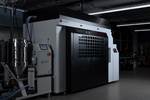MARS Center milestone powers U.S. hypersonics innovation, workforce development
Utah leaders celebrate the culmination of federal, academic and industry players through MARS, accelerating materials and manufacturing concepts to real-world applications, from thermal protection systems to composites.
MARS Center event. Source (All Images) | MARS Center
(WSU, Ogden, Utah, U.S.), in partnership with (Salt Lake City, Utah, U.S.) and state and national leaders, held a celebration on April 4, 2025, in recognition of the , a research and manufacturing facility focused on U.S. hypersonic capabilities.
The celebration brought together university leaders, elected officials, industry partners and students to recognize how far the center has come since its founding in August 2022 and to chart its course ahead. The event featured a series of brief remarks followed by a hands-on tour of the facility showcasing the MARS Center’s equipment and student-led innovation fueling its momentum.
“The MARS Center is not just a research facility — it’s positioned to be a national asset,” says WSU president Brad Mortensen during the event. “It demonstrates the power of partnership between higher education, defense and industry to deliver real solutions for national security and create meaningful opportunities for students in Utah.”
The MARS Center was established to help close a critical national capability gap in advanced materials and manufacturing. While one key focus is the pilot-scale production of high-temperature materials for hypersonic and reentry systems, the center’s impact is reported to extend far beyond this. As a collaborative innovation hub, MARS brings together federal labs, defense integrators, startups and academic researchers to accelerate next-generation solutions from concept to real-world application. With its equipment, industry partnerships and support for small business R&D, MARS is fueling innovation in defense, as well as applications in commercial aerospace, energy systems and emerging technologies like next-gen reactors and steam plants.
Through hands-on collaboration with integrators like Northrop Grumman, Boeing, Lockheed Martin and Raytheon, MARS is enabling the leap from manufacturing readiness level 4 to level 6, targeting a move beyond prototyping to pilot-scale production of reusable thermal protection systems.
As a university-based applied research center, MARS also plays a role in workforce development. More than 90% of students who participate in research activities at MARS remain engaged through graduation. Students are paid competitive wages to contribute directly to live pilot projects, gaining experience in areas ranging from composites fabrication and thermal testing to systems engineering and data curation.
“We are deeply invested in our students at Weber and committed to providing them with the best possible opportunities,” says Benjamin Garcia, executive director of the MARS Center. “With the MARS Center strategically located near Hill Air Force Base, we’re proud to offer hands-on experiences that allow students to explore career pathways while actively contributing to the future of aerospace, defense and critical materials.”
Related Content
-
MATECH C/ZrOC composite is deployed in hypersonic aeroshells
Ultra high-temperature insulating CMC targets hypersonics, space heat shields and other demanding applications, tested up to 2760°C under extreme stagnation pressures.
-
Carbeon C/C-SiC ceramic matrix composites without fiber coating
Dutch startup Arceon is working with leaders in space, hypersonics and industry to test its Carbeon CMC, validating near-net-shape parts with <3% porosity and performance at 1600ºC, targeting UHTCMC and a presence in the U.S. in 2025.
-
Industrializing additive manufacturing in the defense/aerospace sector
GA-ASI demonstrates a path forward for the use of additive technologies for composite tooling, flight-qualified parts.






